by John Feffer
When Donald Trump and Kim Jong Un shook hands on June 30 at the line dividing the two Koreas, the pictures that appeared on front pages all over the world depicted two very different leaders. Trump is a tall, 73-year-old white man who leads the world’s most powerful democracy. Kim is a short, plump, 35-year-old Korean who heads up the world’s most notorious non-democracy. They look like the Laurel and Hardy or the Penn and Teller of geopolitics.
Appearances can be deceptive. Beyond their superficial differences, the two leaders share a great deal in common. In fact, their underlying similarities have helped cement an unlikely friendship.
But what is beneficial for international peace is ominous for the future of American democracy.
Back in 2011, Polish politician Lech Kaczynski looked longingly at how the right wing had taken over Hungary. Viktor Orban was running roughshod over Hungarian democracy, rewriting constitutions, controlling the press, suppressing civil society. Kaczynski said that he couldn’t wait to remake Warsaw, the capital of Poland, as a “Budapest on the Vistula.” When his party won both the presidency and a parliamentary majority, Kaczynski set about doing just that.
Donald Trump likewise looks longingly at the authoritarian states of Asia. He has remarked that the United States should experiment with China’s system of a “president for life.” In a host of other ways, Trump has emulated North Korea. Indeed, especially after his July 4 fusion of the personal, the patriotic, and the military, Trump seems to want nothing less than to create a Pyongyang on the Potomac.
He’s the Decider
The handshake at the Demilitarized Zone on June 30 was both an excellent PR stunt and a potentially important way to advance peace on the Korean peninsula.
Donald Trump and Kim Jong Un know a good photo op when they see one. They also have advisors whispering in their ears about the risks of rapprochement with the great devil across the sea. Yet they have established a rapport on the basis of their mutual love of self-aggrandizement. For better or worse, that’s often the currency of geopolitics. It’s certainly best to spend it on peace, not war.
For any progress to be made on improving U.S.-North Korean relations, however, the Trump administration has to move away from its all-or-nothing approach to negotiations. The administration has made some noises in the direction of the so-called small deal that would represent mutual compromises on the way to the goal of denuclearization, the elimination of economic sanctions against North Korea, and a peace agreement to replace the Korean War armistice.
Any deals of this sort, however, require patience and competence, two qualities sorely lacking in a president given to volatile mood swings and an administration that has gutted its chief institution of diplomacy, the State Department.
In both North Korea and the United States, the two leaders are increasingly the sole deciders. The North Korean political sphere has a veneer of collective leadership through the Politburo and the larger Workers Party, not to mention input from the army and the intelligence services. But in reality, nothing of significance goes forward without Kim Jong Un’s say so. In the United States, meanwhile, Trump’s “brain trust” promulgates the unitary executive theory, according to which the president controls the entire executive branch. Of course, Trump doesn’t need a theory when his gut feeling is sufficient. Never one to pay much attention to other people, Trump routinely ignores the advice of top officials and experts.
Both leaders have attempted to concentrate power in their own hands. Kim did so by simply killing his uncle Jang Song-Thaek and a host of other top officials (including the vice minister of the army, the ministers of education and agriculture, and several ambassadors).
Trump has resorted to less violent means but the result has been the same. The Trump administration has presided over a vast reduction of personnel in key U.S. agencies, like the Census Bureau and the Environmental Protection Agency. He’d like to get rid of the entire Office of Personnel Management. The purpose behind these cuts is not just to save money. It’s to eliminate potential hubs of resistance to the Trump administration’s plans and to Trump himself.
Trump has also increasingly relied on “acting” heads of agencies, including the Pentagon and Homeland Security. The president argues that this gives him greater “flexibility.” In fact, it allows him to prevent cabinet members from establishing much in the way of institutional legitimacy. Trump was not happy with the somewhat more independent thinking of Jim Mattis at the Pentagon or Jeff Sessions at the Justice Department.
One way that Trump has centralized power has been to fire his underlings and keep the administration in a state of flux. Trump “has the record for White House staff turnover, for cabinet turnover and now for the highest turnover within a single department,” according to Kathryn Dunn Tenpas of Brookings. Of course, some of the resignations have been because of incompetence or corruption. But high turnover is a tactic that Trump uses to keep appointees in line and diminish the power of the bureaucracy.
This kind of approach is well-suited to destroying things: a nuclear agreement with Iran, détente with Cuba, multiple efforts to address climate change. But actually creating something — like a treaty with North Korea — may prove beyond the capacity of an administration determined to reduce its own capacity.
Executive Orders
The difference between North Korea and the United States is that the former is a democracy in name alone. Despite Trump’s best efforts, he still comes up against what remains of democratic governance in the United States.
Consider Trump’s attempt to add a citizenship question to the U.S. census in 2020. The ploy is a naked attempt by the Republican Party to rig future elections. Don’t take my word for it. A top Republican operative, Thomas Hofeller, left behind evidence of just such a strategy on his computer when he died. According to The New York Times:
Files on those drives showed that he wrote a study in 2015 concluding that adding a citizenship question to the census would allow Republicans to draft even more extreme gerrymandered maps to stymie Democrats. And months after urging President Trump’s transition team to tack the question onto the census, he wrote the key portion of a draft Justice Department letter claiming the question was needed to enforce the 1965 Voting Rights Act — the rationale the administration later used to justify its decision.
Even without considering Hofeller’s computer files, the Supreme Court decided by a slim majority that the administration was lying about its rationale for including the citizenship question on the census. Just as in the administration’s earlier attempt to destroy the Affordable Care Act, it was Chief Justice John Roberts, an otherwise very conservative judge, who represented the swing vote.
But none of that matters to Trump. He has instructed Attorney General William Barr to come up with another rationale for the inclusion of the question, which will be no doubt as duplicitous as the first one that the Supreme Court rejected. And if that fails, Trump will bypass the Supreme Court — and the constitution — simply by issuing an executive order.
It’s not the first time that Trump has ruled by decree. He has issued more than 100 of them through the middle of May. Many are uncontroversial or just ceremonial. Others, like his Muslim travel ban or declaration of a state of emergency at the border, have provoked fierce opposition.
It’s one thing to try and bypass Congress. Other presidents have done that. It’s another to try and bypass the Supreme Court in such a blatant manner. That could very well throw the country into a constitutional crisis. Such a crisis would not be an unintended consequence of Trump’s attempt to create a semi-permanent Republican majority. It’s a deliberate effort to scupper the checks and balances of democracy.
Parallel Styles
Parades in Pyongyang feature displays of military might, patriotic bombast, and scores of cheering followers of the leader’s personality cult.
And now, in Trump’s America, so do celebrations of July 4.
Commentators expected a self-serving Independence Day speech from the president. So, when he instead offered a rambling review of American history, they gave him passing marks.
But the speech provided the same kind of distortions you might expect in North Korea. Trump urged young people to join the army, though he did everything he could to avoid the Vietnam War. He gave a shout-out to Harriet Tubman but has done his best to delay Tubman’s replacement of Andrew Jackson on the $20 bill. He praised the women’s movement and the civil rights movement, though his administration has done its utmost to reverse the gains of those struggles.
By devoting most of his speech to America’s military history, he turned the holiday into a celebration of martial spirit, an apt mirror of North Korea’s military-first doctrine. The tanks on the ground and the fighter jets overhead punctuated this point. The hardware also supplied a powerful subliminal message: if he deems it necessary, this president will bring the military out onto the streets of Washington, DC to secure the country’s freedom from all those who threaten it, whether they work for the Iranian Revolutionary Guard or write for The New York Times.
The military-first approach is not the only similarity in style between Trump and Kim Jong Un. In North Korea, nepotism is the very structure of governance, with the Kim family controlling the state apparatus from the country’s inception. Today, Kim Jong Un’s sister serves as a top advisor and emissary. Similarly, Trump has installed his daughter and son-in-law as top advisors, and he imagines that Ivanka will become president one day. Perhaps even one day soon, as Bob Cesca explains at Salon:
In fact, there’s a rumor currently circulating among Republican circles in Washington in which Trump suddenly declines the nomination sometime next summer, presumably for health reasons, then lobbies the convention delegates to toss their votes to Ivanka as his rightful heir and the 2020 nominee.
Then there’s the personal enrichment. Kim has a fortune of $5 billion at his disposal, with plenty of resources socked away in overseas accounts. There is no emoluments clause in North Korea’s constitution: the leader can use his office to extract as much wealth from the system as he pleases.
Trump’s ambitions are only somewhat more modest. For instance, he doubled his hotel income from 2016 to 2017, netting nearly $30 million, and he’s made more money at places like Mar-a-Lago from elevated fees. He even hopes to make money from his presidential library. But Trump probably hopes that presidential immunity will protect him from any future charges of financial impropriety, which would save him a great deal more money in the long run.
Back to That Handshake
As a relatively young man at the top of a rigidly hierarchical system, Kim Jong Un no doubt expects a long career ahead of him. But if U.S. sanctions continue to squeeze the North Korean economy, he will have an increasingly difficult task of delivering the goods to the elite, the sliver of middle class, and the struggling majority of the population. He needs a helping hand from the first American president willing to step onto his territory. Trump’s successor will not likely be so generous.
Donald Trump’s tenure is considerably more fragile. He’s no spring chicken. Many people in Congress are itching to impeach him. And plenty of voters can’t wait to eject him from office in 2020. But Trump knows that his political fate, not to mention his overall legacy, rests on his ability to shake things up and produce unexpected results – like a peace treaty with North Korea. But that depends on Kim Jong Un’s willingness to compromise.
The handshake across the DMZ might have united unusual bedfellows. But these two leaders also need each other for their own political survival. That’s good news for the potential reunification of the Korean peninsula. But the mirror-imaging that is taking place, the ongoing construction of Pyongyang on the Potomac, is bad news for transparency, good governance, human rights, and economic justice.

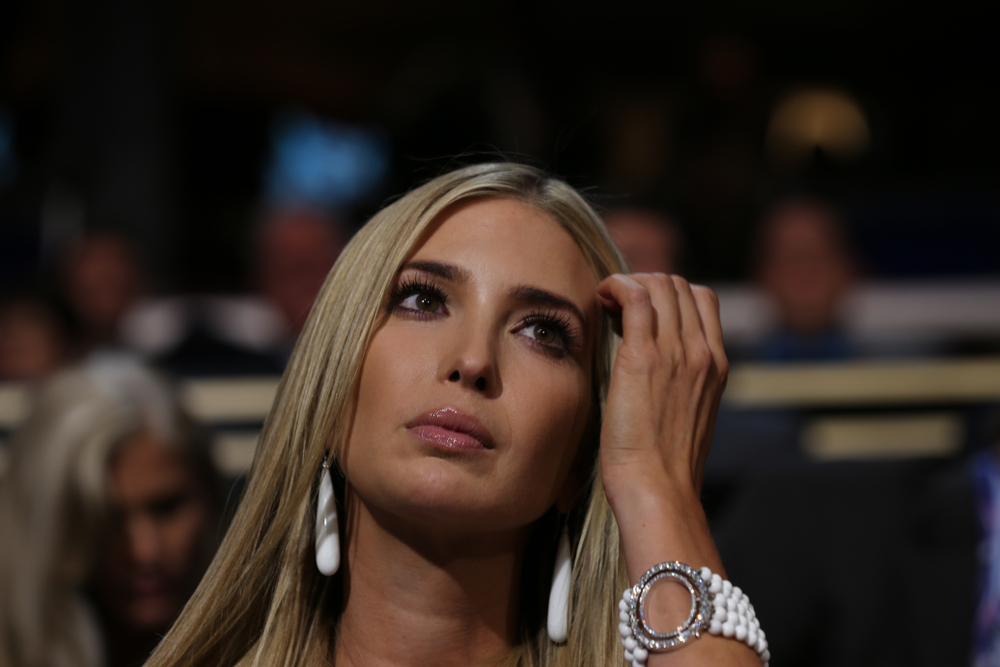
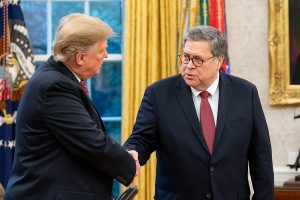
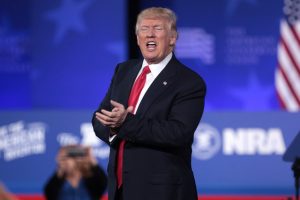
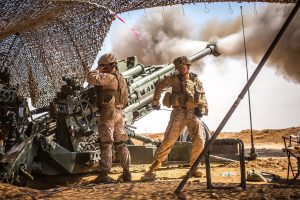
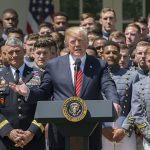
Kim Jong-un is an entertains passing by show, that’s precisely at Trump’s reach.
The problem with nuclear North Korea is that it has a only one solution: U.S. leaving the Peninsula.
Serious U.S. past Presidents would never meet with Kim and would let the problem decay forever because they still believed in the sacred mission about just the presence of U.S. as an icon of ‘stability’ not only over there but everywhere else. The real solution in the Far East, and in the Middle East is exactly to put an end on the U.S. presence… And let the locals solve their own problems. In the Middle East Israel has to start real negotiations with their neighbours, including Iran. And in the Far East South Korea looks ripe for negotiations with the North under China leadership and commitment for peace and development.